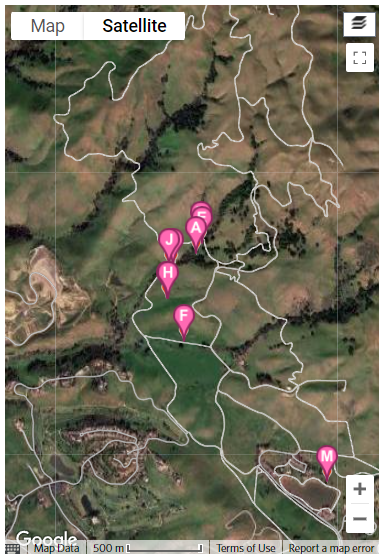Snapshot Cal Coast Bioblitz (June 17 - July 9, 2023)
https://www.inaturalist.org/projects/snapshot-cal-coast-2023
Day 1 (June 17, 2023; 171 observations; 94 species)
I walked the 4.4 miles around the Sunnyvale WPCP Pond in the Baylands near the Sunnyvale Recycling Center.
- I recorded 21 species of birds, but it seems there should be more. There perhaps a hundred or more mallards out on the bay, with some ruddy ducks, an occasional gull, cormorant, and a few pelicans flying overhead. There have been days when I've seen dozens of species in one day. Where are all the birds?
- I saw two mallard families with a total of 16 babies. Always so sweet!
- There were so many lizards and they all look quite different. I couldn't resist photographing all of them.
- The pond turtles were out sunning themselves. Yay!
- The water was so green!
- Predators have been busy. I saw 2 dead ducks, a few gull wings, and jackrabbit remains.
- I recorded 49 species of plants. Unfortunately, only 15 were native and 12 of the 34 non-natives are invasive species.
Day 2 (June 18, 2023; 125 observations; 76 species)
I visited Don Edwards National Wildlife Refuge and surveyed the area around the visitor's center because the main trails are still closed due to construction. I also briefly visited the nearby Alviso Marina County Park.
- The coyote brush shrubs and California buckeye trees look so healthy after all the rain this past winter. Last year they looked very shriveled and pathetic after many years of drought.
- I recorded 14 species of birds - many were different from those I saw at Sunnyvale Baylands. Black-necked stilts and cliff swallows were the most common species.
- There were a few lizards, but not nearly so numerous as at Sunnyvale Baylands.
- I recorded 49 species of plants: 27 were native and only 6 of the remaining 22 non-natives are invasive species.
Day 4 (June 20, 2023; 82 observations; 55 species)
I visited Coyote Creek Lagoon at Don Edwards for a couple hours. There were a few species not found at either of the previous locations. I didn't photograph most plant species that were also found at the other two sites. I saw 19 species of birds.
Day 9 (June 25, 2023; 172 observations; 86 species)
I visited two locations in the South Bay: (1) the area where the Guadalupe River flows into the bay, and (2) the perimeter of Salt Pond A4 near the Sunnyvale recycling plant. These are the only areas I know of in the South Bay where you can actually walk along the shore. Alviso Marina & Don Edwards are doing maintenance work, so their shorelines are closed to the public right now.
- The trail was almost completely obscured by 6-7 ft. tall smilo grass, oats, mustards, Cretan mallows, and thistles. It was like walking through a dense prickly jungle. Not pleasant. As soon as I was able to get down to the shore, I walked there instead and found lots of small crabs, a few clams and mussels, and a turtle carapace.
- There's an interest in saline-tolerant Quercus, so I've been documenting every Q. lobata that I run across in the Baylands.
- I've seen very few honey bees this season - quite alarming!
- There are a lot of artichoke thistles (Cynara cardunculus) around Pond A4. I know they're non-native, but they're huge and have beautiful purple flowers, I think they're pretty, and the yellow-faced bumble bees love them.
Day 12 (June 28, 2023; 123 observations; 72 species)
I walked the Adobe Creek Loop Trail at Shoreline Mountain View for a couple of hours. At the northernmost point, the tide was receding, so I climbed over rocks to get to the shore to find some shells. Bad idea! I inadvertently stepped in sinking mud up to mid-thigh and I was afraid I wouldn't be able to get out by myself. I got a taste of what it must've been like for the animals at La Brea Tar Pits. I eventually pulled myself out, but I was covered in mud from head to foot and had to walk the 2 miles back to my car looking like the creature from the black lagoon. So humiliating! But I got some good pictures and found a few more species not documented at the other sites. My favorite sighting of the day was the big black-tailed jackrabbit resting in the shade.





